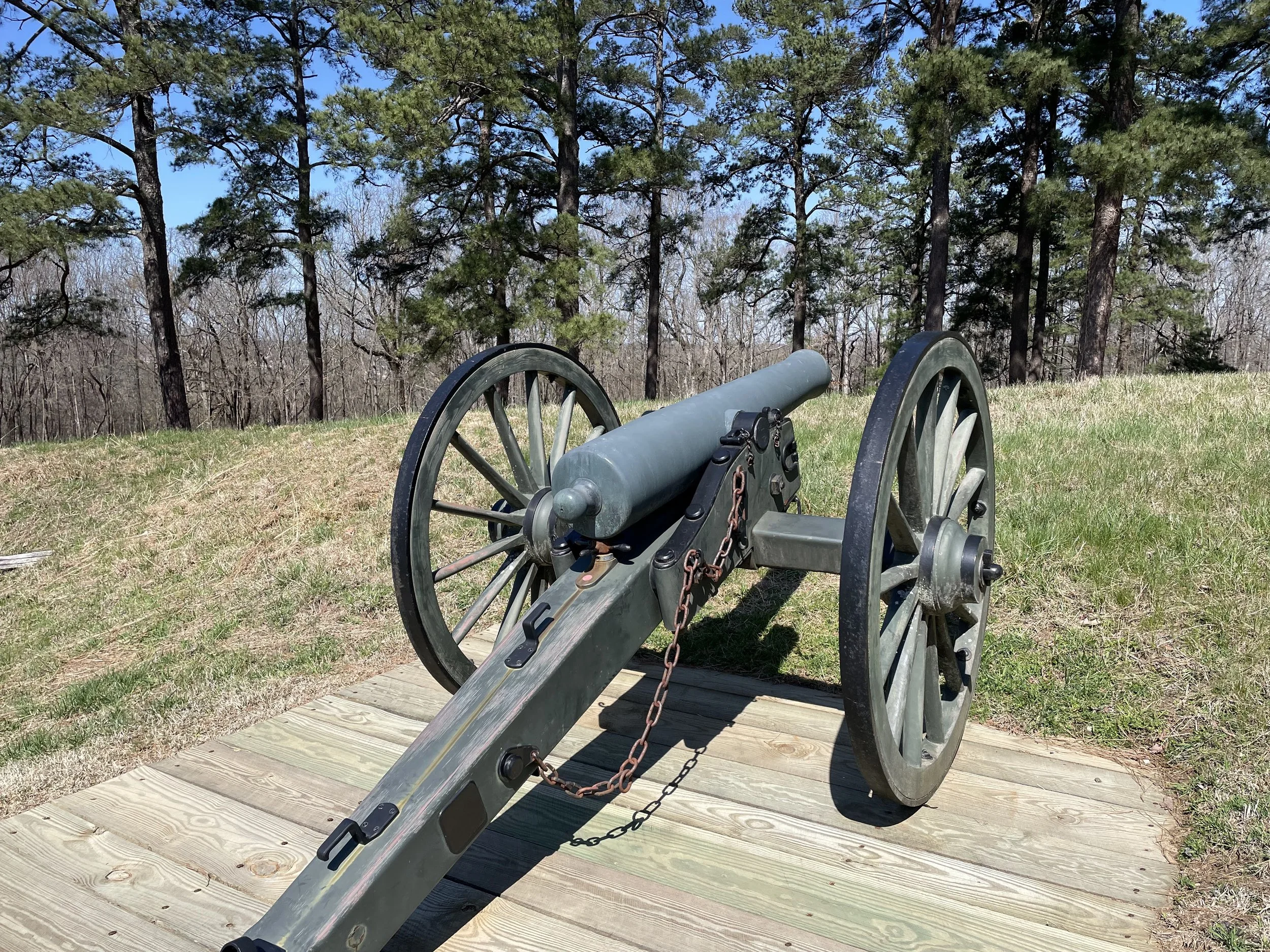
Leeds and Co. Napoleon Number 19 at Petersburg National Battlefield
Among the many interesting artillery pieces at Petersburg National Battlefield is the earliest surviving Napoleon manufactured for the Confederacy. This Napoleon made by Leeds and Company of New Orleans is displayed at Battery Number Five within walking distance of the visitors center. (It is marked with the Leeds and Co. Foundry Number 19.)
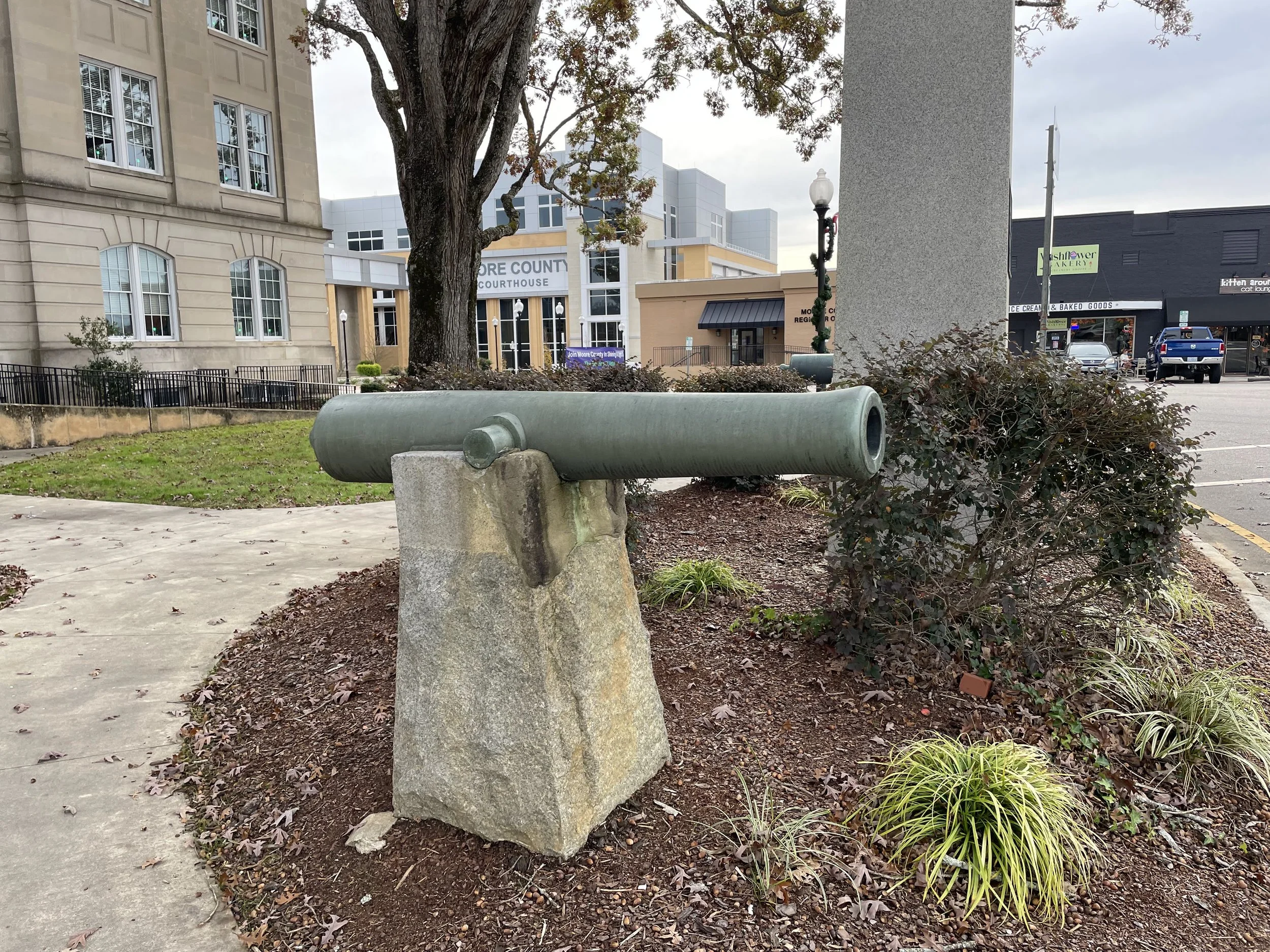
The Napoleons of Carthage, North Carolina
Two Napoleons (12-Pounder Field Gun-Howitzers of the American Civil War) flank a monument to James Roger McConnell, pilot of the Lafayette Escadrille, in Carthage, North Carolina outside of the historic former Moore County Courthouse.

Iron, Banded 6-Pounders in Joliet, Illinois
Two smoothbore iron banded six-pounders that the registry identifies as of probable Confederate manufacture are displayed beside a G.A.R. Memorial in St. Peter Lutheran Cemetery in Joliet, Illinois today at a GAR Memorial. Many thanks to friend of the page Mike Clennon for sharing these photos!
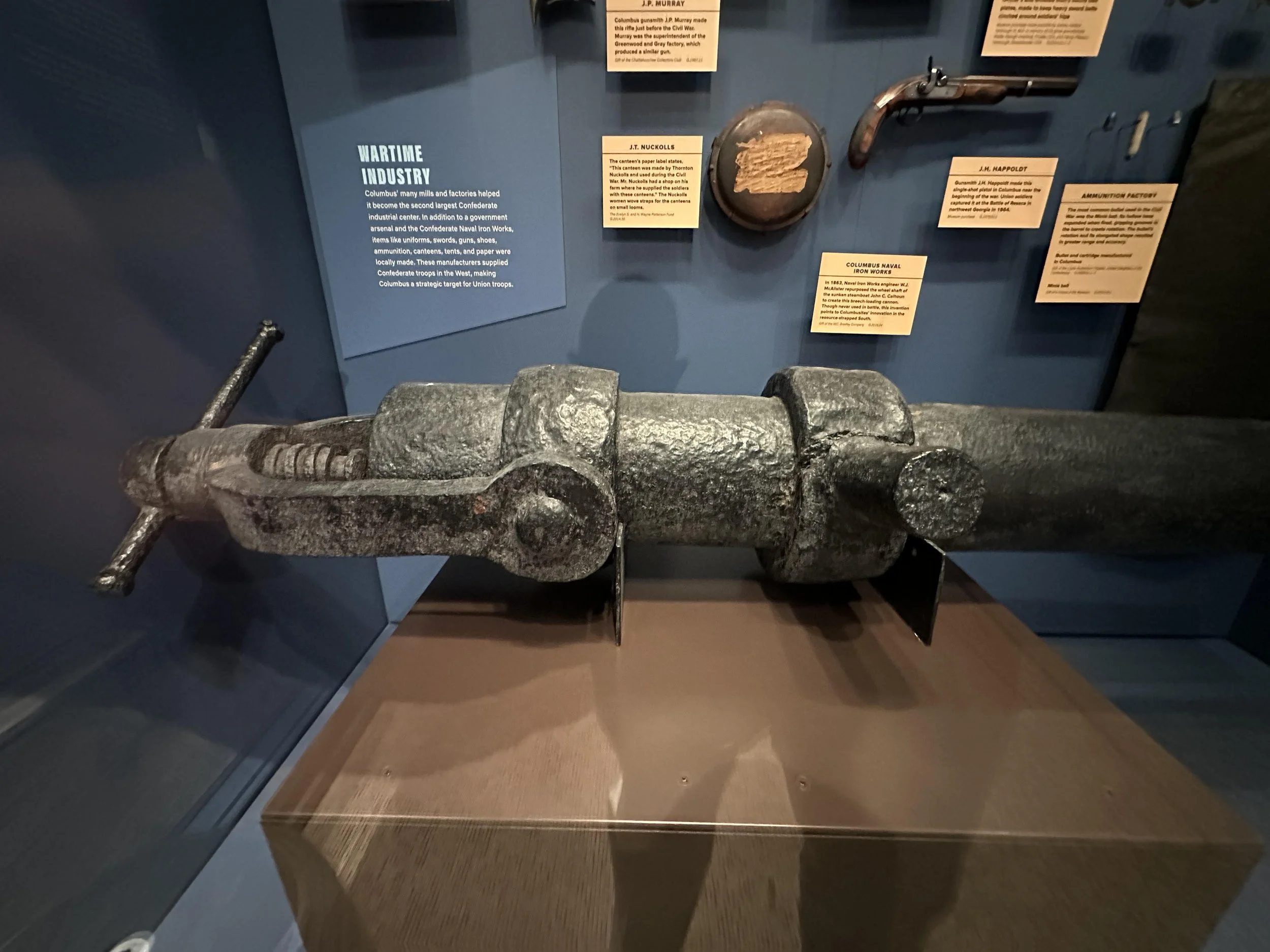
The Breechloading Rifle of Columbus
This little breechloading rifle was manufactured in 1863 by engineer W.J. McAllister using the wheel shaft of the sunken riverboat John C. Calhoun at the Columbus Naval Ironworks Company. Warren Ripley measured the bore at 2.75 inches. Ripley also gives the length overall as 61.25 inches, though he states that this doesn’t include the breechblock link (pg. 181).
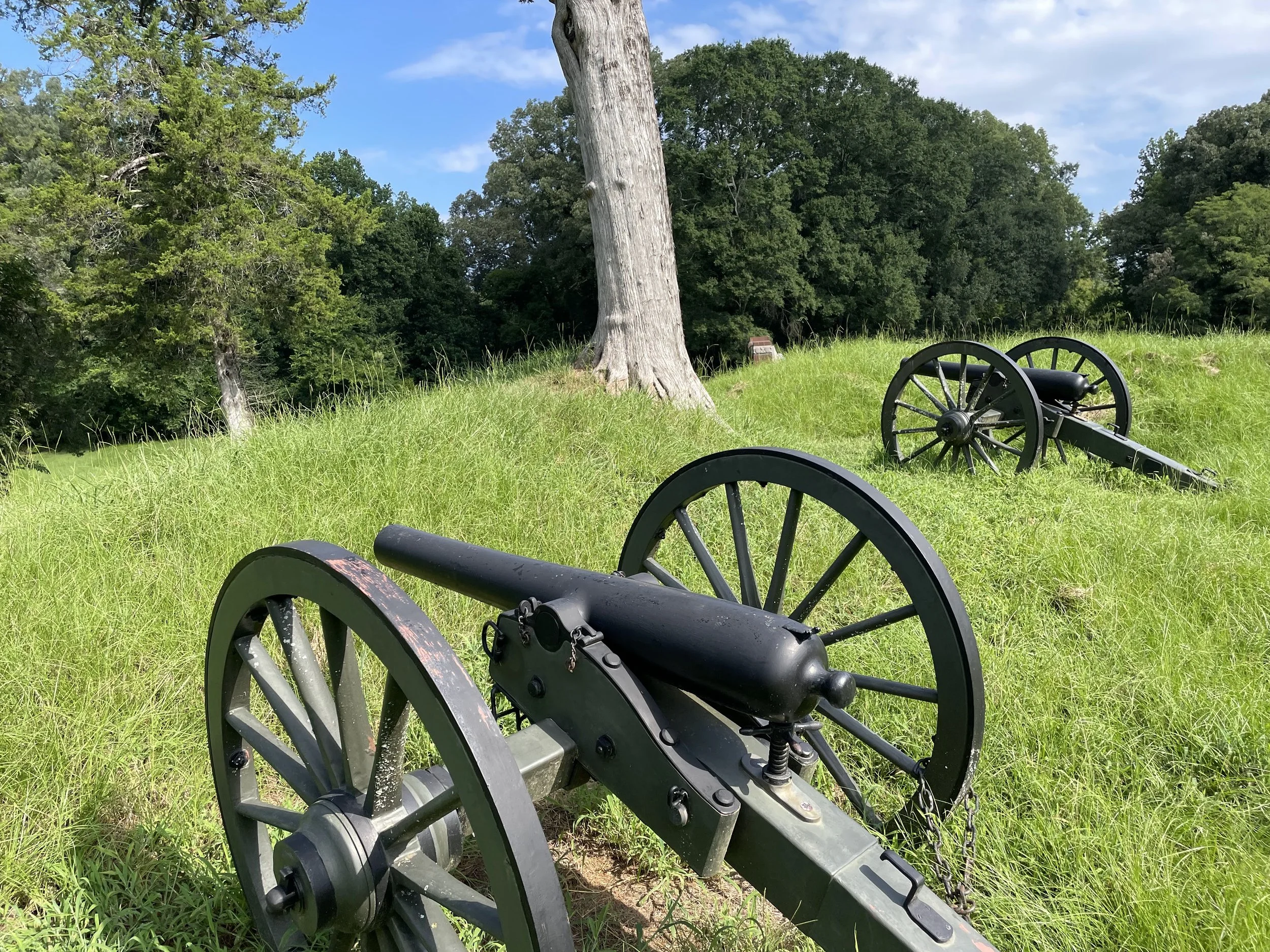
US Army 3-Inch Ordnance Rifles 415 and 416 at Vicksburg
Two US Army 3-Inch Ordnance Rifles flank a plaque noting the service of the 12th Battery Wisconsin Light Artillery. I believe these to be registry numbers 415 and 416, though none of the photos I took of the muzzles are great. Both rifles were manufactured in 1862 and both are marked as weighing 816 pounds as manufactured.
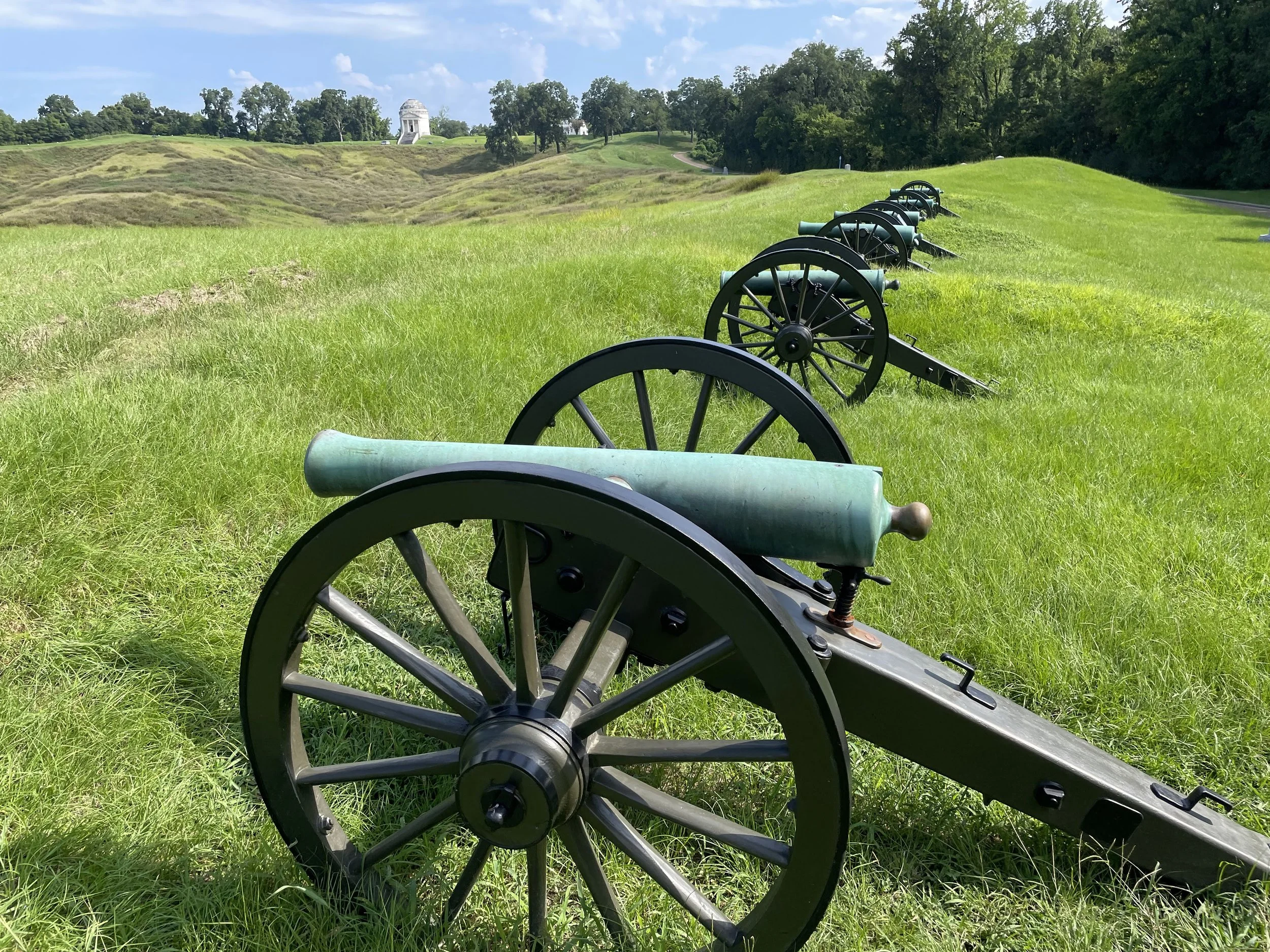
US Army 12-Pounder Napoleon, Ames 32 at Vicksburg
US Army Bronze 12-Pounder, Light, Pattern of 1857, Ames Number 32, is displayed at Vicksburg (near "Tour Stop 1 - Battery De Golyer") Ames Manufacturing Company cast Number 32 in 1862. As manufactured it weighed 1,220 pounds. It is a well preserved example of a 12-Pounder Napoleon.
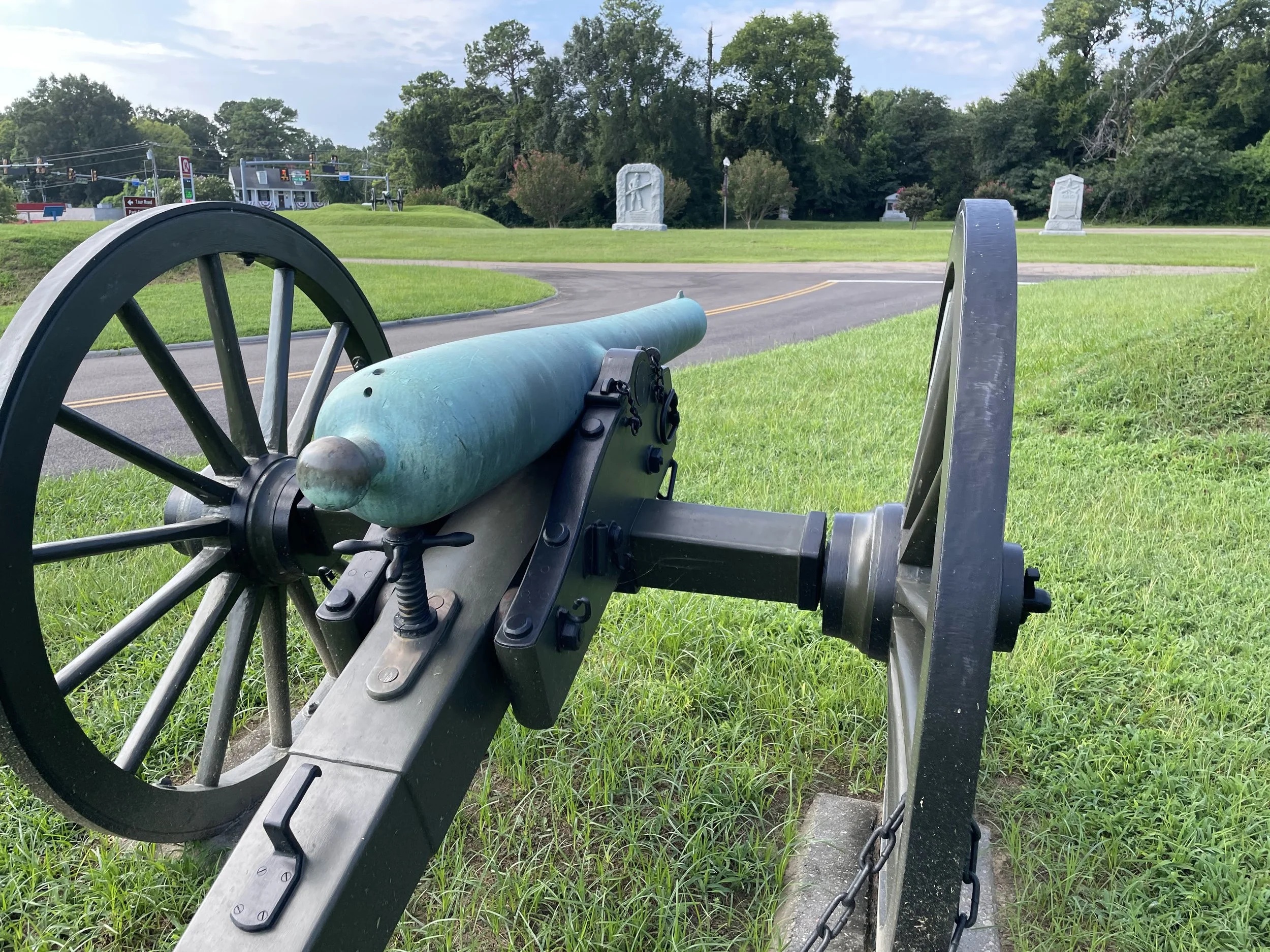
3.8-Inch James Rifle, Type Two, at Vicksburg
3.8-Inch James Rifle, Type 2, Number 20 cast by Ames in 1861. It is displayed at Vicksburg National Military Park near the Visitors Center. The James Rifle, named after its inventor Militia General and US Senator Charles Tillinghast James, is a Bronze 3.8-Inch Rifled Cannon. It was developed to fire a projectile also invented by James. It is also called a 14-Pounder James Rifle.
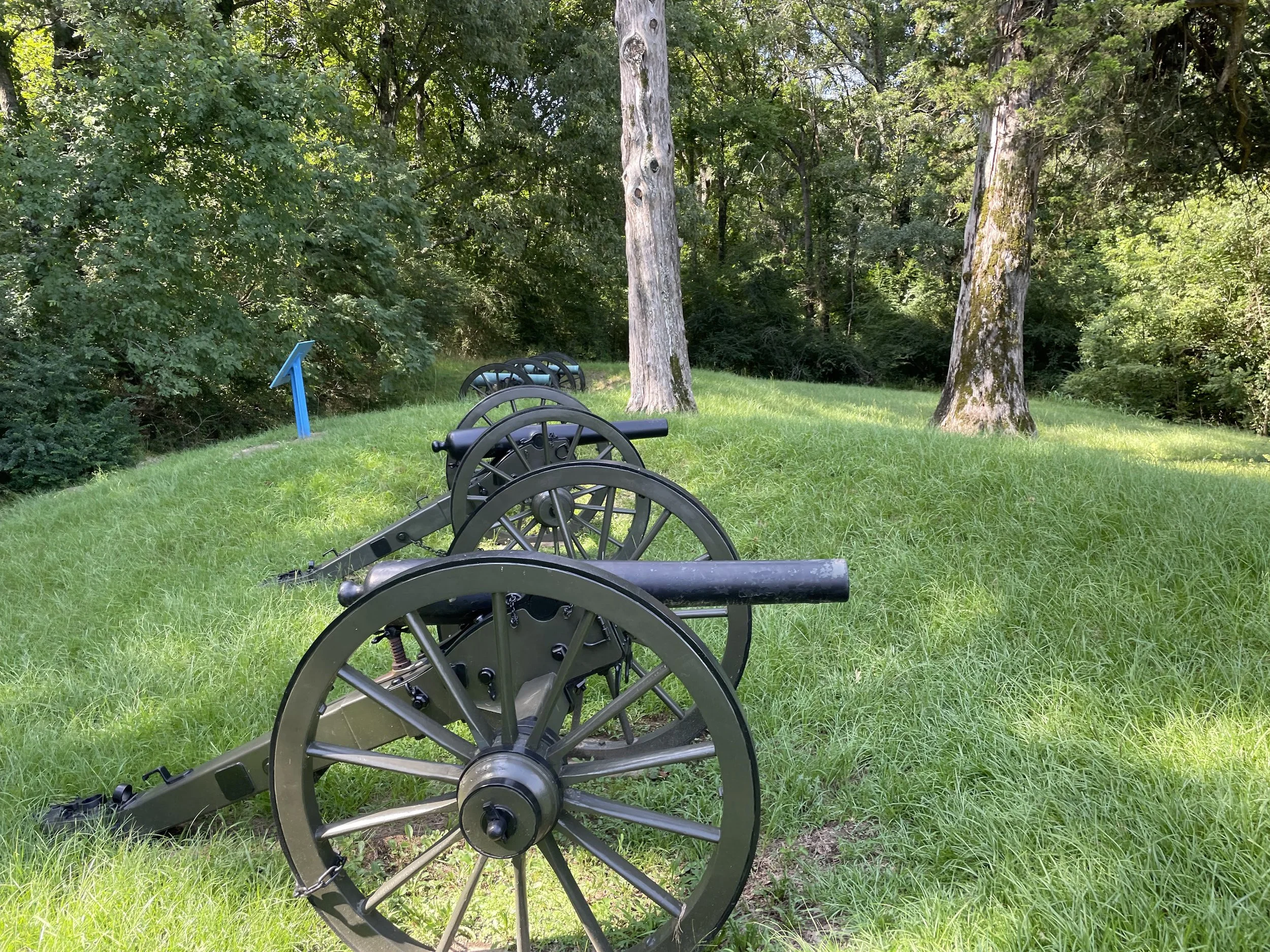
US Army 3-Inch Ordnance Rifles 108 and 336 at Vicksburg
Two US Army 3-Inch Ordnance Rifles are displayed at Vicksburg National Military Park along with two 12-Pounder Howitzers near a sign describing the service of Yost’s Independent Ohio Battery. According to the sign, two 3-Inch Rifles and two 12-Pounders which had been captured at the Battle of Champion’s Hill were turned over to Company F, 32nd Regiment Ohio Volunteer Infantry.
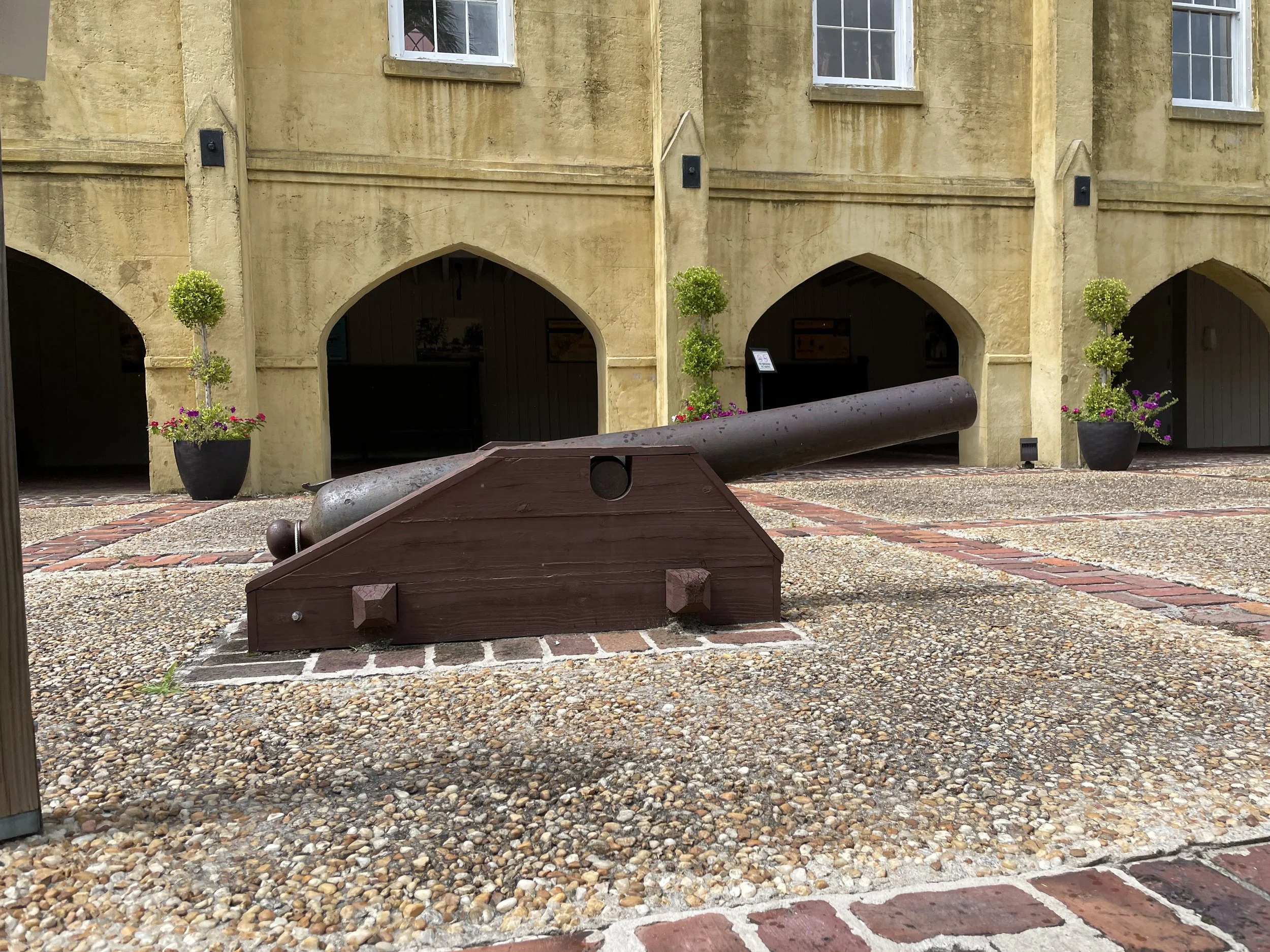
Blakely and Ordinance Rifle at the old Beaufort Arsenal
A US Army 3-Inch Ordnance Rifle (left) and a 3.5-Inch Blakely Rifle are displayed at the Old Beaufort Arsenal in Beaufort, South Carolina. The two cannons are:
3.5-Inch Blakely marked "Blakely's Patent, No. 50, Fawcett, Preston, & Co., Liverpool, Makers, 1862. Ripley categorized this Blakely as a “Type 4”.
US Army 3-Inch Ordnance Rifle Number 265 manufactured in 1862 at the Phoenix Iron Company.
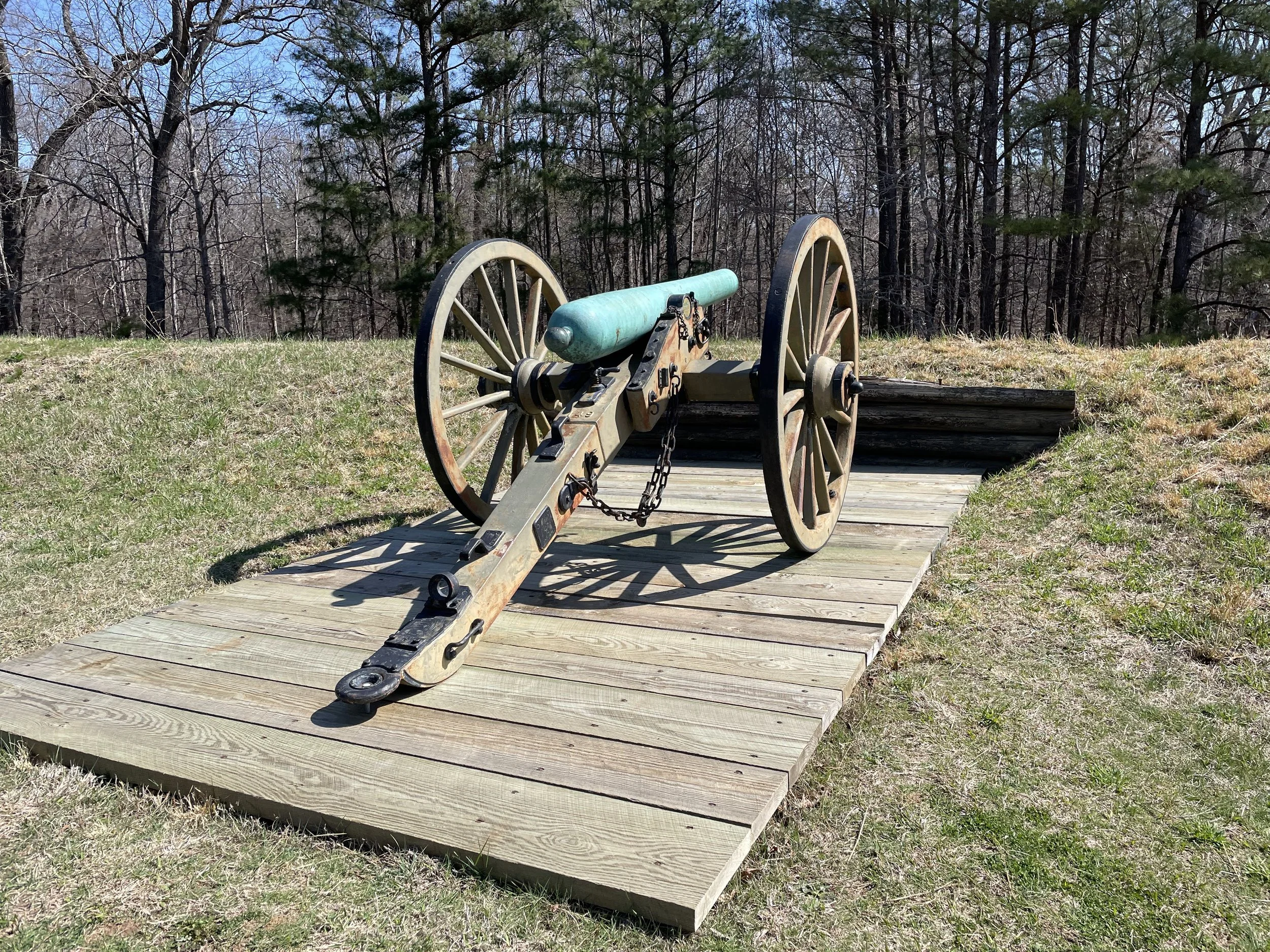
Brierfield Arsenal 6-Pounder at Petersburg
A 6-Pounder smoothbore manufactured by Brierfield Arsenal in Alabama (near Selma) in 1863 is displayed at Petersburg National Battlefield. This is the only surviving cannon produced by Brierfield. A large "C.S." is visible on top of the tube above the trunnions. The weight, 982 pounds, is stamped on the muzzle.

3.3-Inch Parrott Rifle in Kingstree, South Carolina
3.3-Inch Parrott Rifle displayed beside the Williamsburg County Courthouse in Kingstree, South Carolina. As Hazlett et al. note, this is one of three surviving 3.3-Inch Parrotts. (One of the others is at The Citadel in Charleston while the third is at Harpers Ferry.) Also according to Hazlett, these rifles externally conform to the size an shape of a US Army 10-Pounder Parrott.
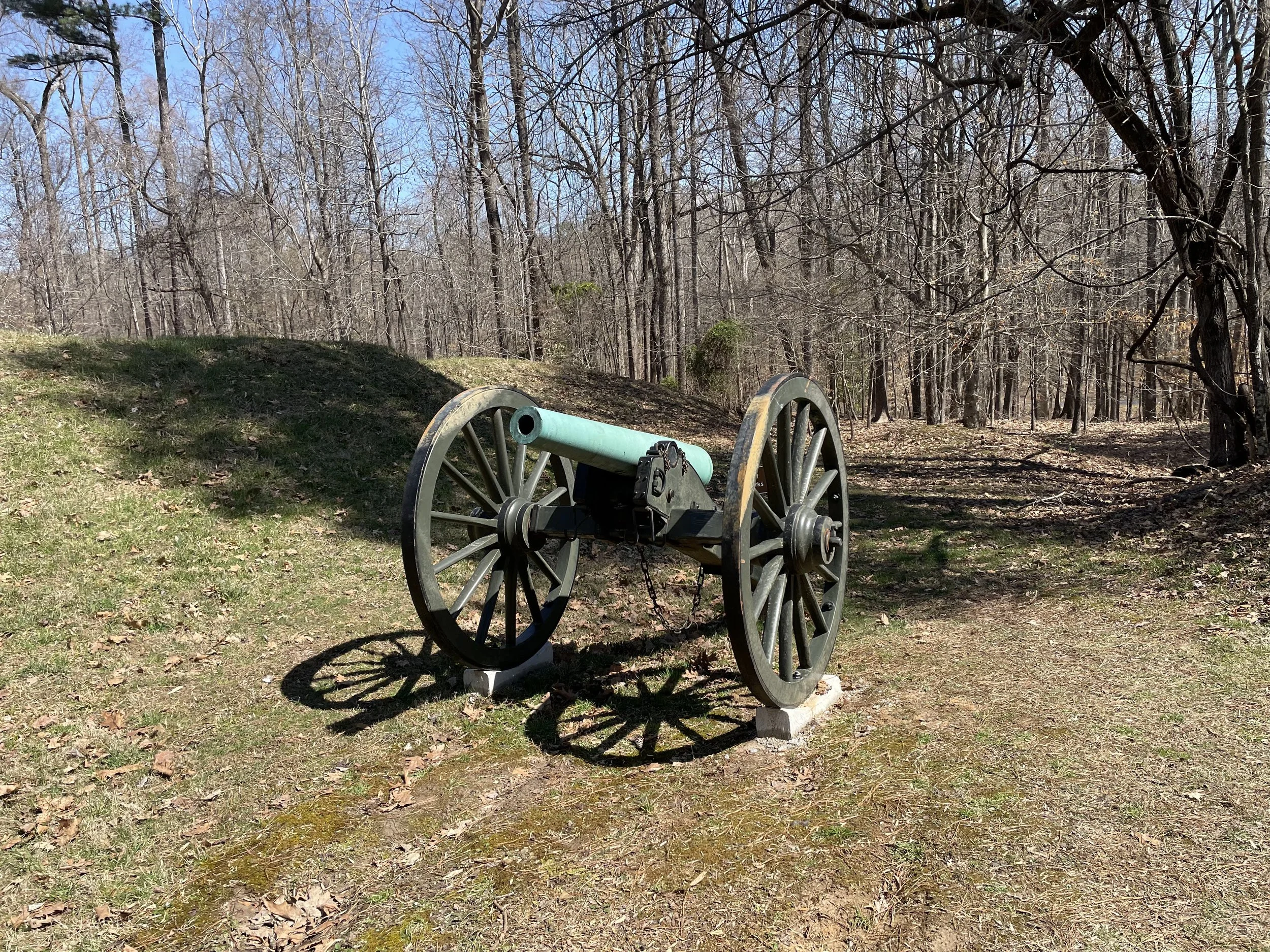
3-Inch Quimby and Robinson Rifles at Petersburg
A Quimby and Robinson 3-Inch Bronze Rifle is seen at Battery 8 at Petersburg. Quimby and Robinson of Memphis, Tennessee delivered at least 77 field pieces and siege guns to the Confederacy between November 1861 and the fall of Memphis to the US Navy in June 1862. Four of these were 3-Inch Bronze Rifles. Two of these are displayed at Petersburg.
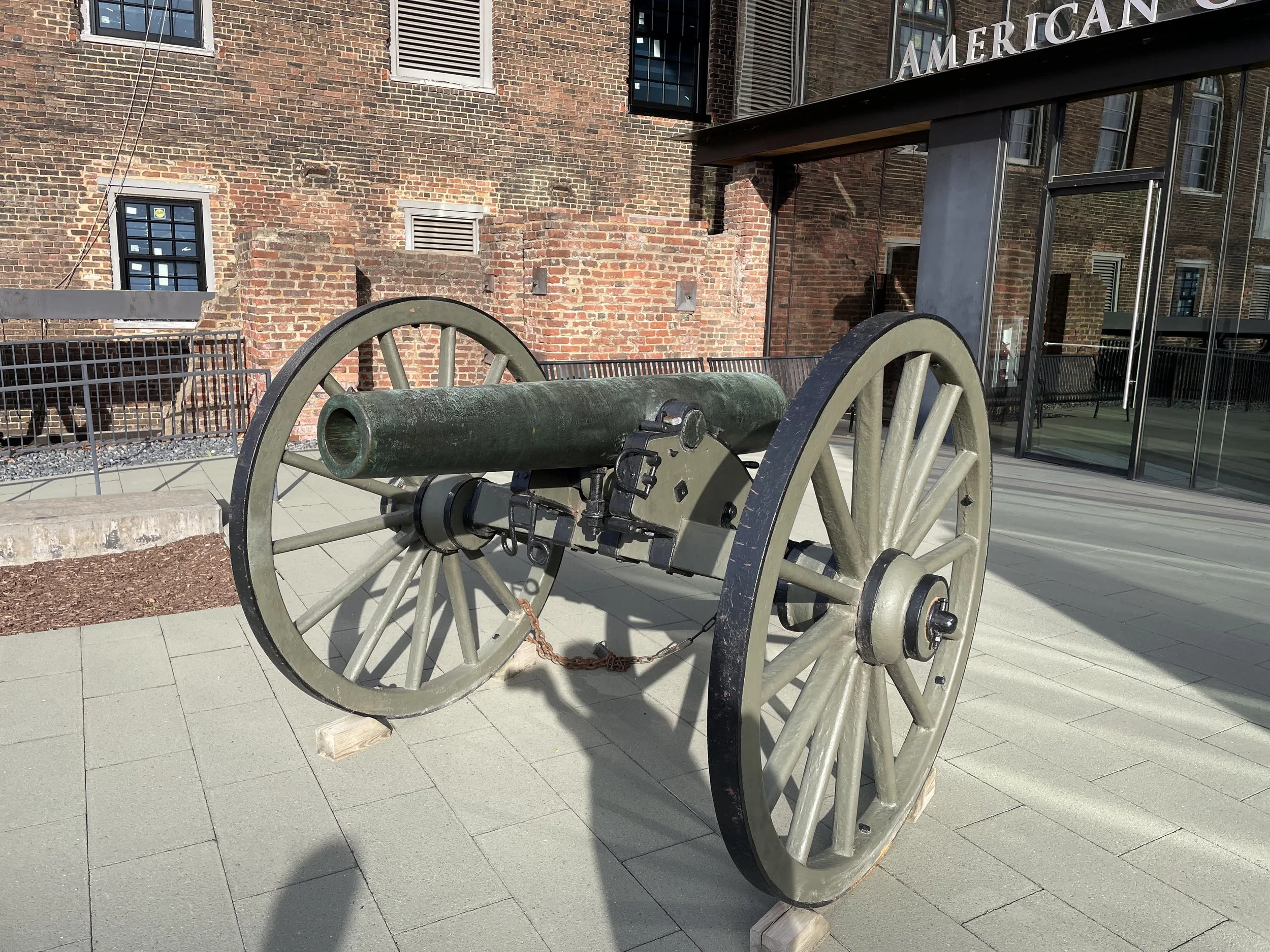
12-Pounder Confederate Napoleon at the American Civil War Museum in Richmond
A 12-Pounder Confederate Napoleon is displayed in front of the American Civil War Museum in Richmond, Virginia. The “Confederate Napoleon”, a bronze smoothbore gun-howitzer, is designed to fire the same shot, shell, canister, and case as the US Army 12-Pounder Napoleon (Pattern 1857). However, given the pressures on Southern industry, most Confederate Napoleons lack the the visual refinements of the US Army model. The Confederate Napoleon typically does not have any muzzle swell. The tube likely was turned on a lathe only enough to function, so it will have a rough appearance. This particular example was cast at Tredegar Foundry - the site of the museum where it is presently displayed.
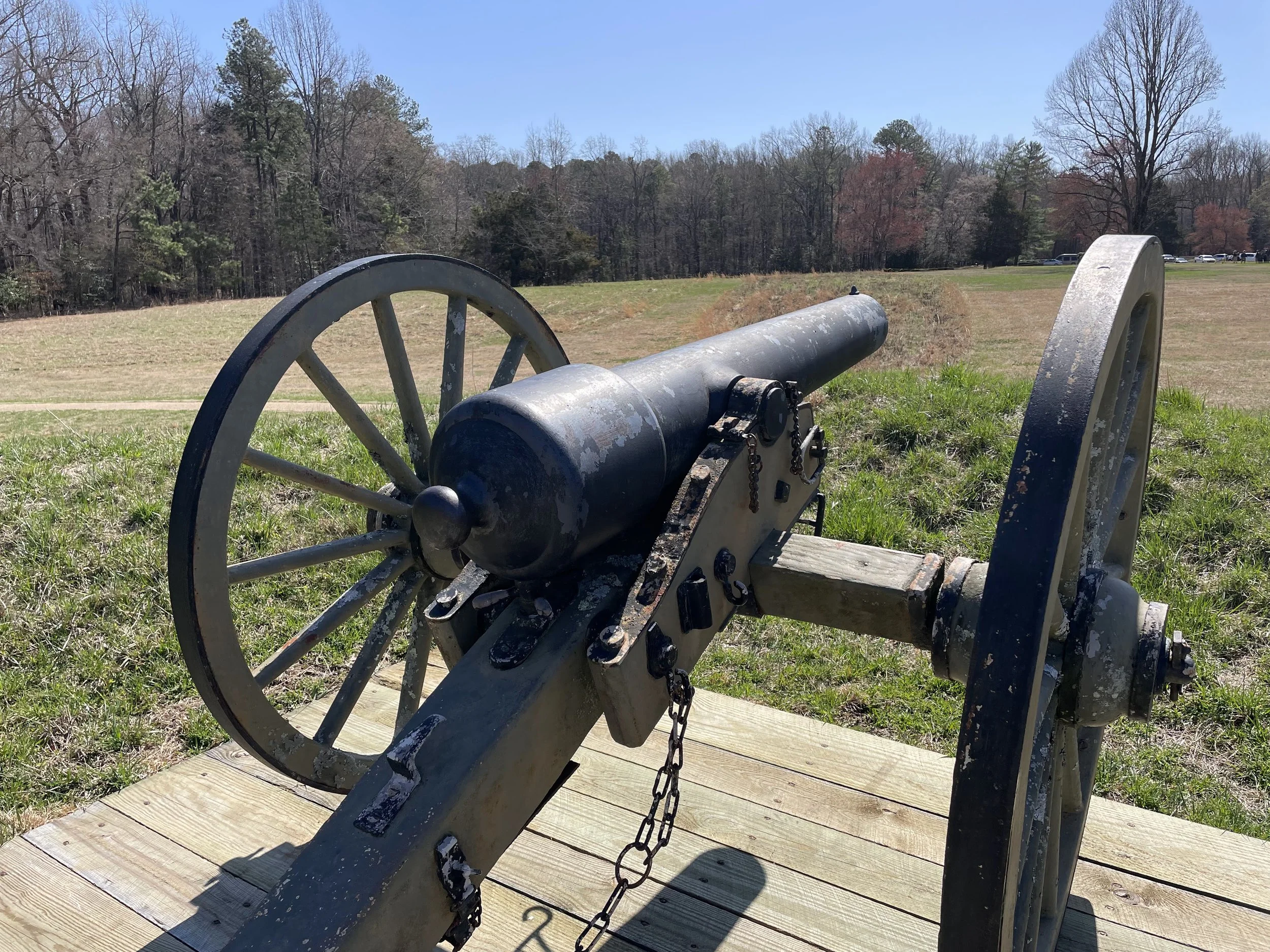
12-Pounder Confederate “Iron Napoleon” at Petersburg
12-Pounder Banded Smoothbore "Confederate Iron Napoleon" at Petersburg National Battlefield, Battery 5. Tredegar's foundry number 2243 is visible on the left trunnion. This piece was cast in January of 1865. As bronze became scare, the Confederacy turned to manufacturing the "Napoleon" in iron. Weight of the tube, 1,249 pounds, is similar to earlier bronze examples.

Early US Army Napoleons at Petersburg National Battlefield
Two early examples of US Army 12-Pounder "Napoleons" are displayed at Petersburg National Battlefield. Having handles above their trunnions, they are among the first examples of the 12-Pounder, Light, Pattern 1857 manufactured for the US Army.
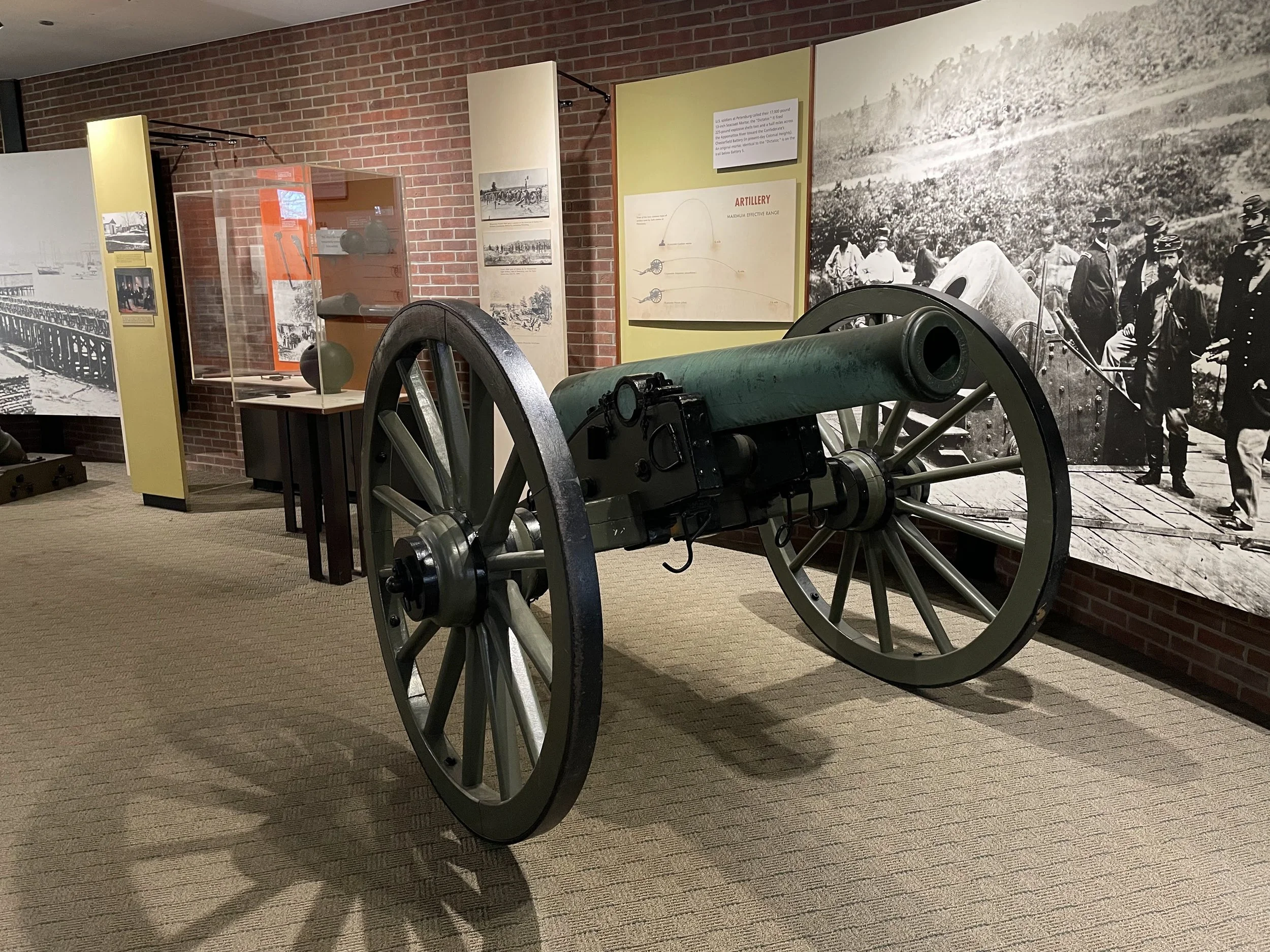
12-Pounder Napoleon, Revere Copper Company Number 253, at Petersburg
This Revere Copper Company 12-Pounder Napoleon, Number 253, in the visitor center at Petersburg National Battlefield bears a placard which states: "This 12-Pounder bronze Napoleon tube was captured by the Confederates during the Battle of Reams Station, August 25th, 1864.
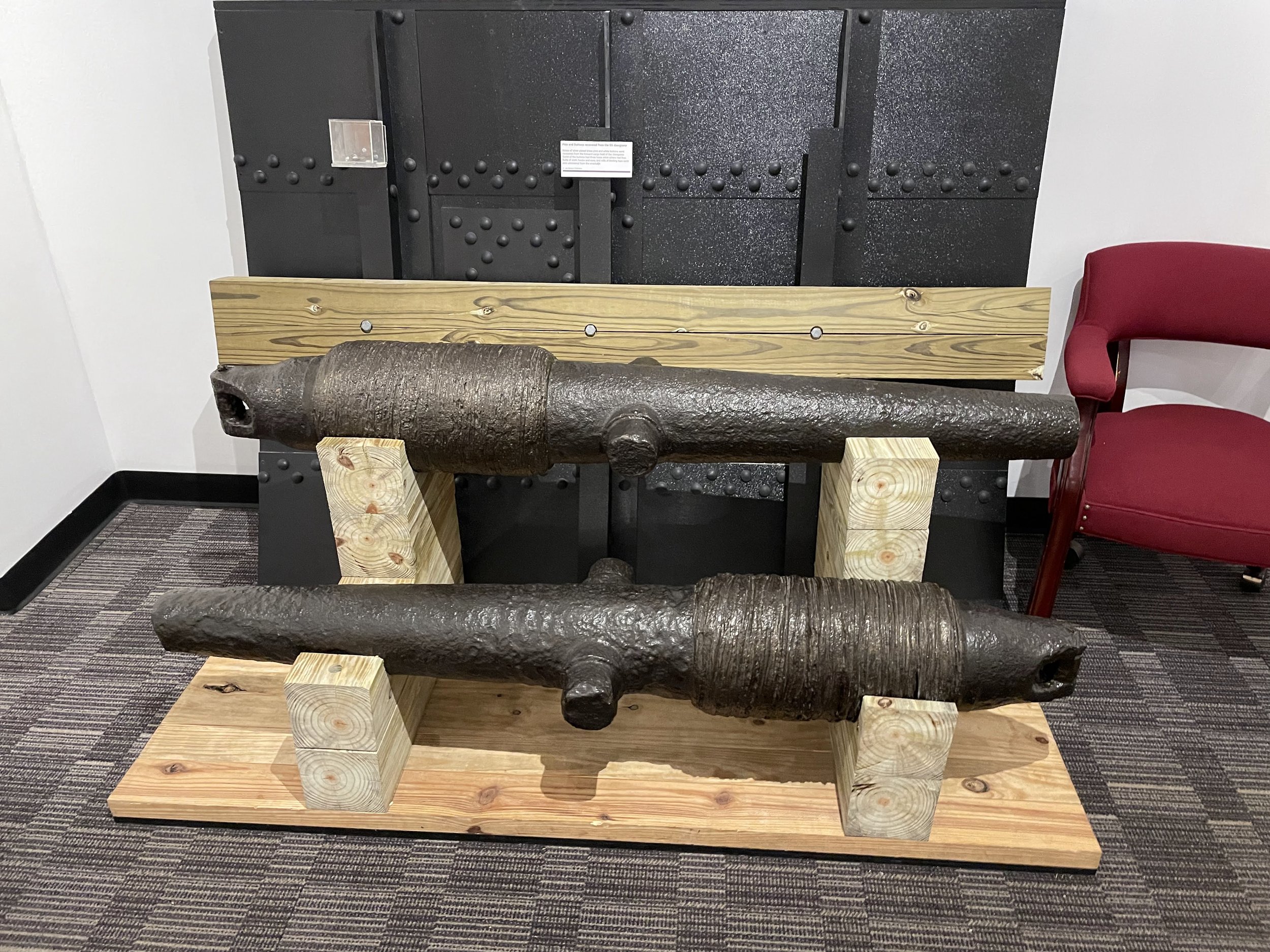
2.9-Inch Blakely Rifles at the South Carolina Military Museum
Two 2.9-Inch Blakely Rifles recovered in 1974 from the wreck of SS Georgiana are displayed at the South Carolina Military Museum in Columbia, South Carolina. Georgiana was attempting to run the blockade into Charleston on March 19th, 1863 when she was intercepted by blockading vessels including the Yacht America, USS Housatonic, and USS Wissahickon.

The Bronze Smoothbores of Charleston
Four bronze smoothbore cannons - A 6-Pounder Field Gun of the American Revolution, a Model 1841 12-Pounder Howitzer engraved S.C., a 12-Pounder Mountain Howitzer at Fort Sumter, and a 12-Pounder Napoleon at Fort Moultrie - are displayed in and around Charleston, South Carolina.
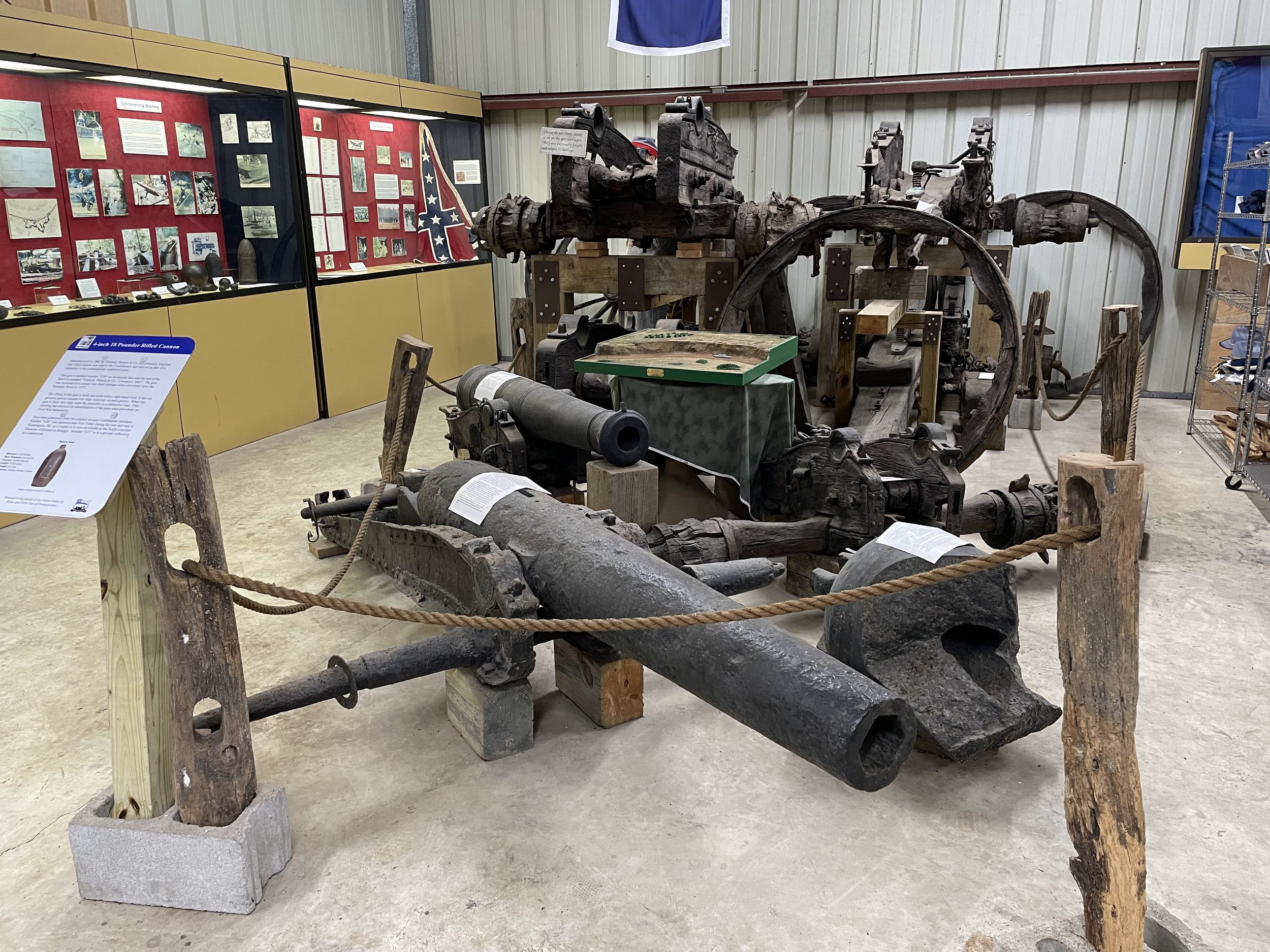
4-Inch Fawcett Preston Rifle at Fort Branch
A 4-Inch Rifle manufactured by Fawcett, Preston, and Company of Liverpool in 1862 is part of the extraordinary collection of artillery, carriages, and many other artifacts recovered from the Roanoke River near Fort Branch and presently displayed at the site in North Carolina.
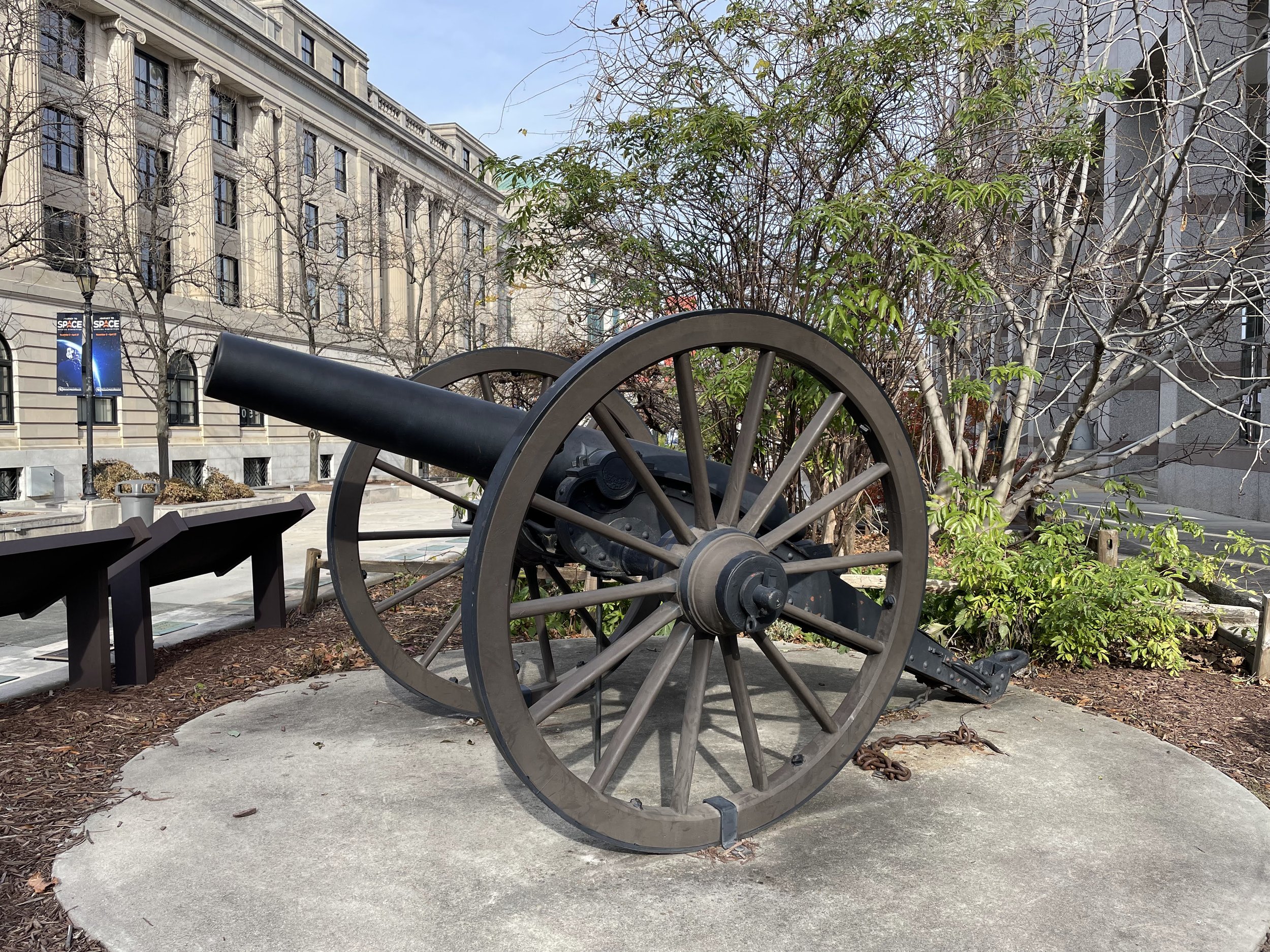
4-Inch Fawcett Preston Rifle in Raleigh, North Carolina
A 4-Inch Rifle manufactured by Fawcett, Preston, and Company of Liverpool which was used by the Confederates near Fort Fisher until captured by the US Navy on August 23rd, 1863 is displayed in Raleigh, North Carolina. This cannon may (or many not) be a “Blakely Rifle”.